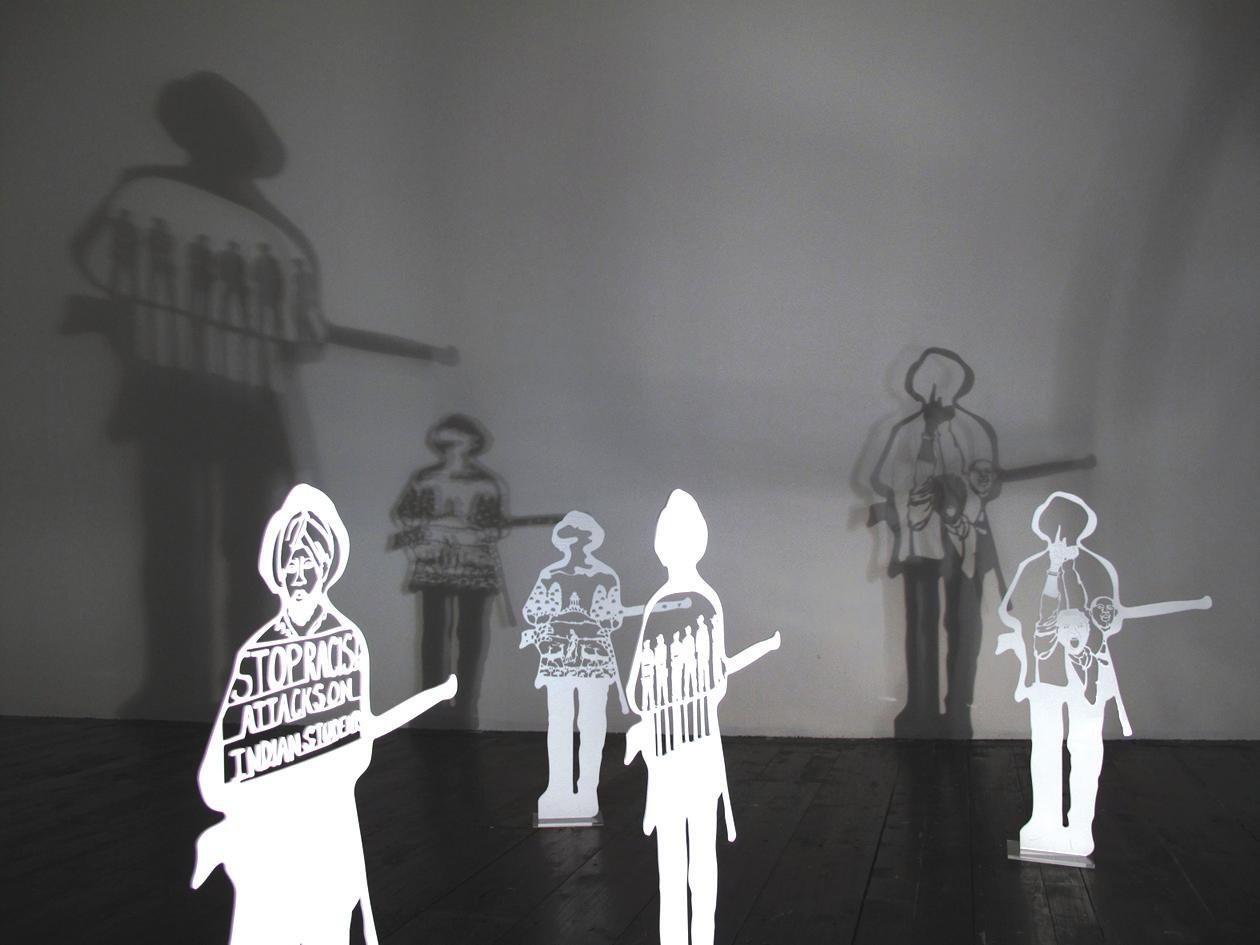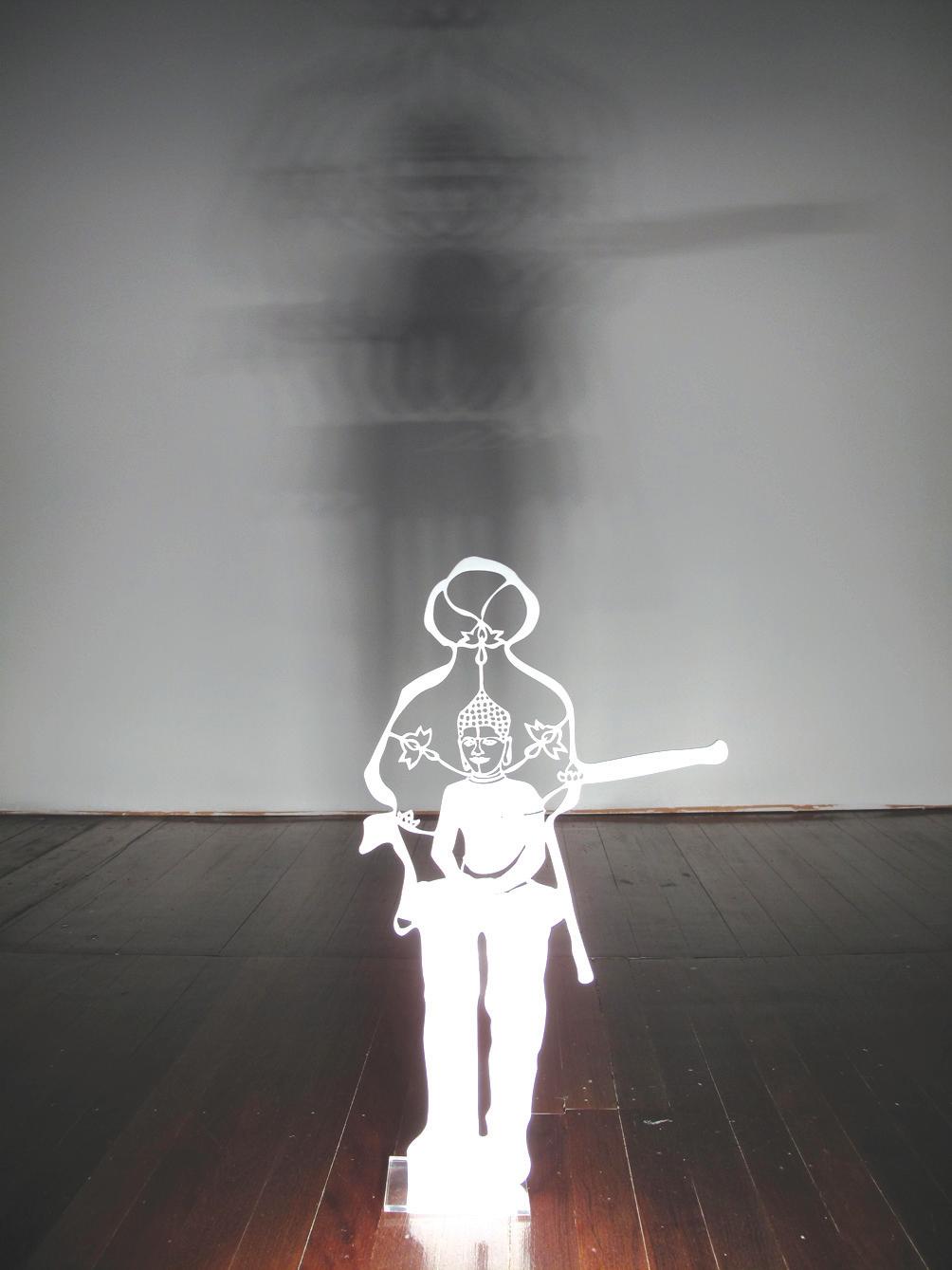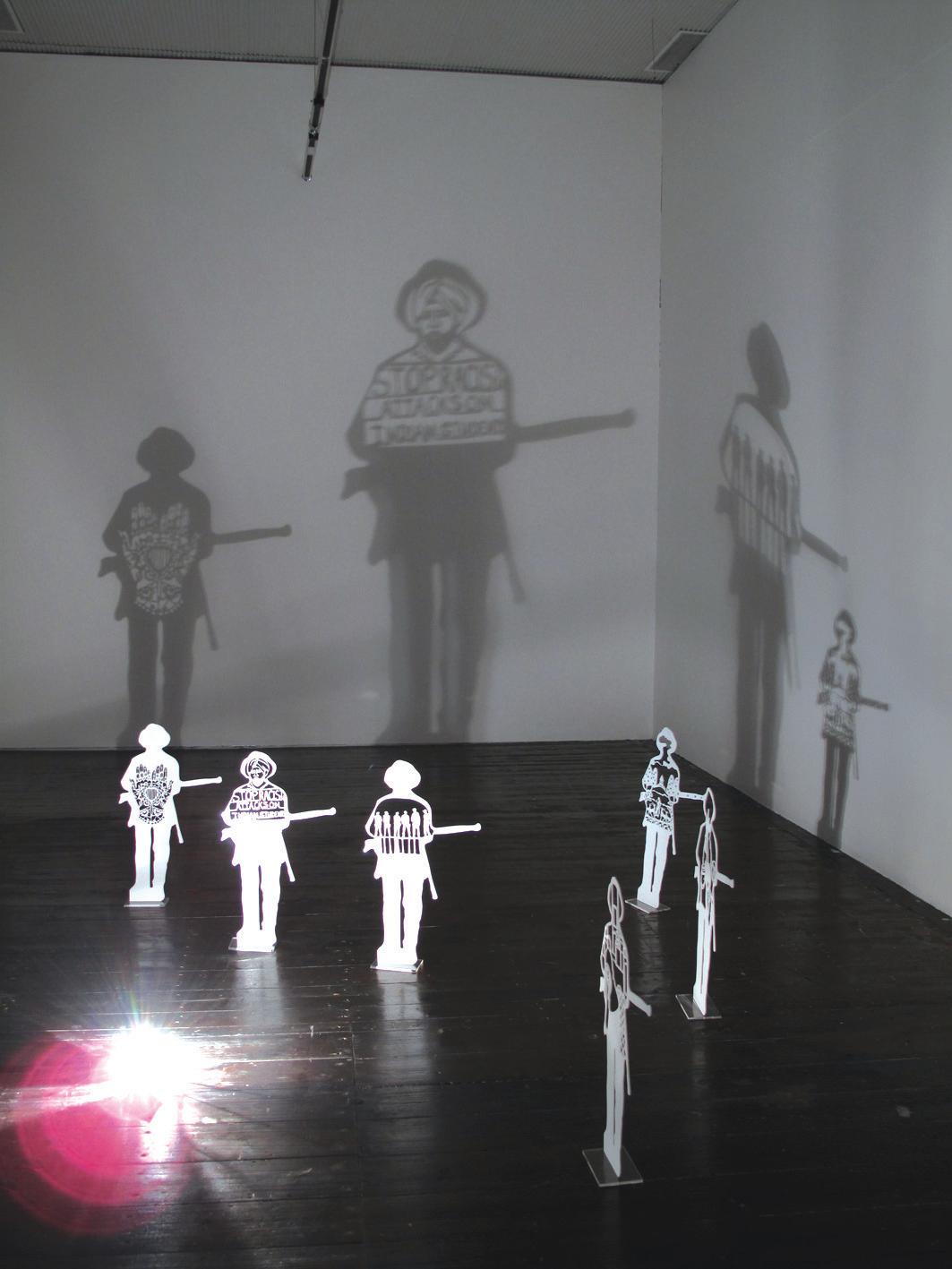
3 minute read
Shadow Shadow
from 2009-12 Sydney (1)
by Indian Link
Sangeeta Sandrasegar explores the issues of racism and contemporary slavery through deep, meaningful shadows, writes SHIVANGI AMBANI-GANDHI
Shadows are ephemeral, but the shadows of Sangeeta Sandrasegar’s works will linger in the mind, long after her solo exhibition at Gallery 4A closes on December 12, 2009.
Her sustained research and development of a visual language consisting of shadows led to the exhibition titled White Picket Fences in the Clear Light of Day Cast Black Lines, which comprises of one new work of the same title and some older works created between 2007 and 2009.


The cacophony of the busy Hay Street of Sydney’s Chinatown dissipates in the dark and quiet enclave that the 32-year-old artist creates in the gallery. On the upper level, White Picket Fences... consists of two groups of two-dimensional, white acrylic sculptures of a soldier’s silhouette, standing about a foot-tall on the floor. Light bulbs lay alongside to give the work a second dimension - “a second life,” says Sandrasegar - through the shadows cast on the pristine, white walls.
Within each silhouette, lay a range of seemingly disconnected images - the Buddha, the Indian deity of Krishna, Melbourne’s Flinders Street Station, idyllic landscapes from miniature paintings, hennaed palms, police squads and protesters upholding placards condemning racism. And here the narrative emerges.
Those who followed the frenetic media coverage of racial attacks on Indian students in Australia recently, will immediately identify these images of police and protesters.
Sandrasegar was in Spain as part of an Australia Council residency when the attacks were reported. The constant bombardment of images by the media seems to have left a mark on her psyche. In this work, the hysteria is recreated for the audience through the multitude of sculptures and their many shadows. “The contemporary images of the protesters and police are copied from newspaper clips that I saved at the time,” says Sandrasegar.
The viewer, drawn in, must now walk around, into and through the work, to piece together the rest of the story. “Krishna is an iconic image of India,” says Sandrasegar. This image points towards the home of the immigrants.
“The idyllic landscapes depict the loss of where you come from and the new land that you come to, but is not idyllic,” she says. “The Buddha is a symbol of contemplation and looking again. I am not being didactic or preaching, but just want to encourage viewers to think about the issues. I am not taking sides.”
The title of the work brings further layers of interpretation to the work. White picket fences, are the symbols of ideal middleclass suburbia - one that many Indian immigrants to Australia aspire. Picketing also has the alternate reading of protests - alluding to those staged by the Indian community in Melbourne after the attacks.
The motif of Black Lines came to her after readings of Tasmania’s history, Sandrasegar told me. ‘The black lines of the title refer in part to the infamous period of conflict between European settlers and local indigenous inhabitants known as the Black War,’ Sandrasegar says in her artist statement.
During the 1820s, a human chain of male colonists -convict and free - was formed in northern Tasmania, in a failed attempt to move southwards for six weeks, pushing the Indigenous population into the Tasman Peninsula.
“This sounded like modern detention centres - these stranded spaces in Australia that they start creating,” Sandrasegar says. “Although we have apologised, how we deal with people hasn’t changed - whether those people were here first, or they are coming in now.”
Even with the storm over the Indian student issue subsiding, debates have been raging over the ‘boat people’. For Sandrasegar, herself an immigrant, this labelling of the ‘UnAustralian’ and the ‘Other’, has been a continuing area of exploration.
In the second part of the exhibition, older works displayed on the lower level, Sandrasegar gives voice to other minorities - people caught on the margins of society. Among these, are three works from the series of seven, titled The Shadow Class, depicting the myriad forms in which slavery exists today. A carpet-weaver, a sex worker and a domestic - each a silhouette of Sandrasegar cut out from felt and then embellished with mixed media - are the Shadow Class.
Unlike her usual practice of objects that cast shadows, these works of black felt are shadows themselves - the slaves are gone; only their shadows remain.
White Picket Fences in the Clear Light of Day Cast Black Lines, Gallery: Gallery 4A 181-187 Hay St , Sydney, NSW 2000 until 12 December, 2009










